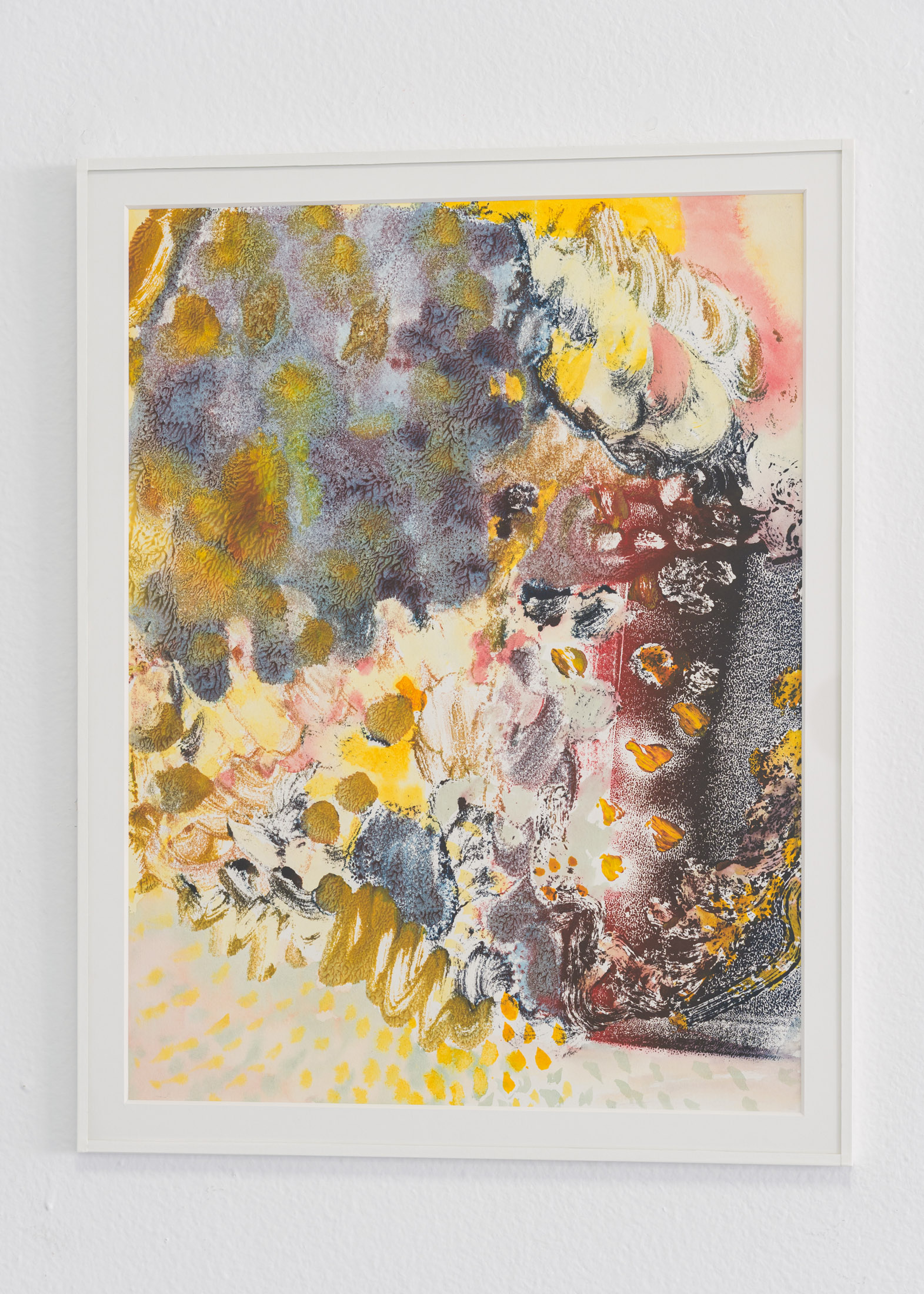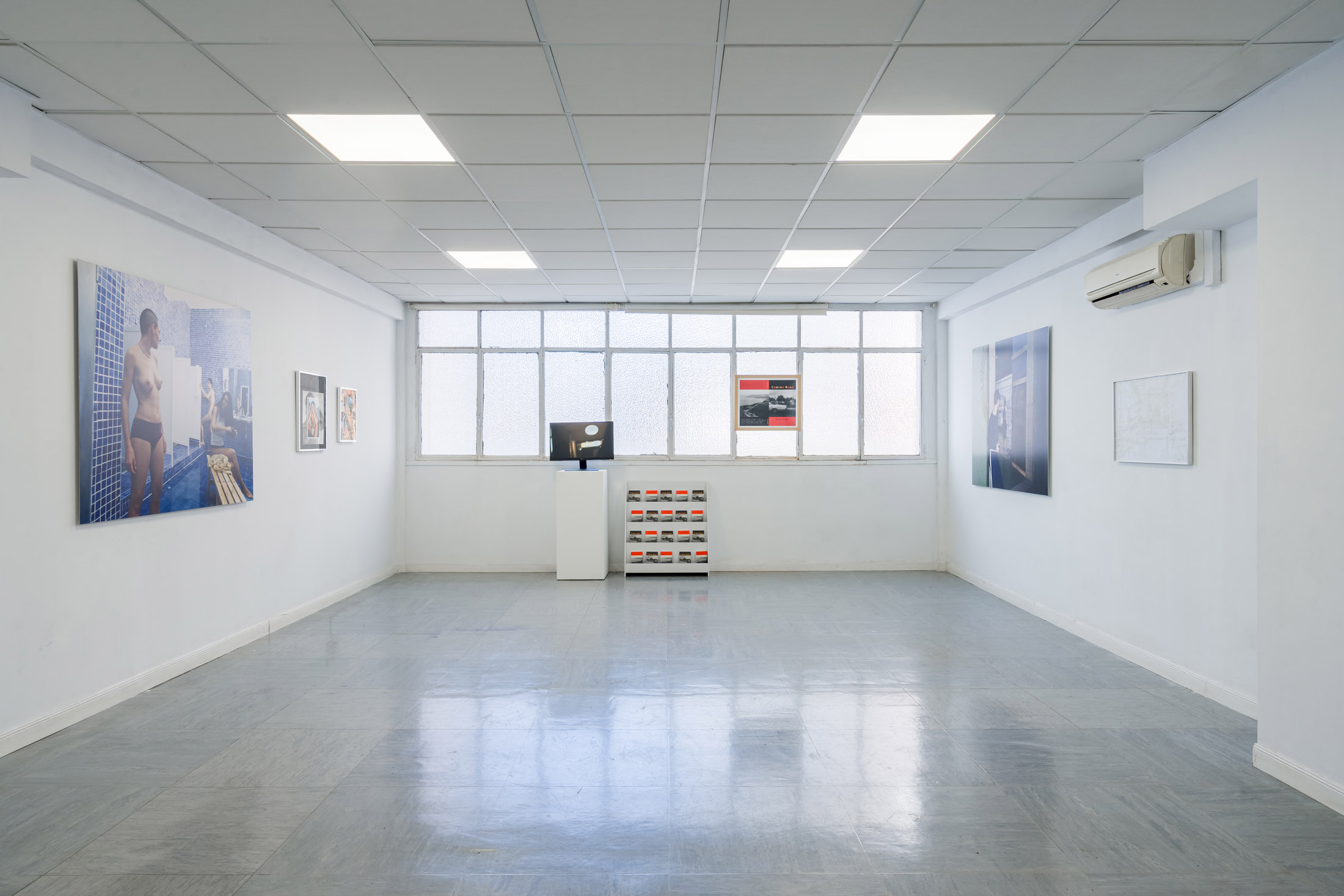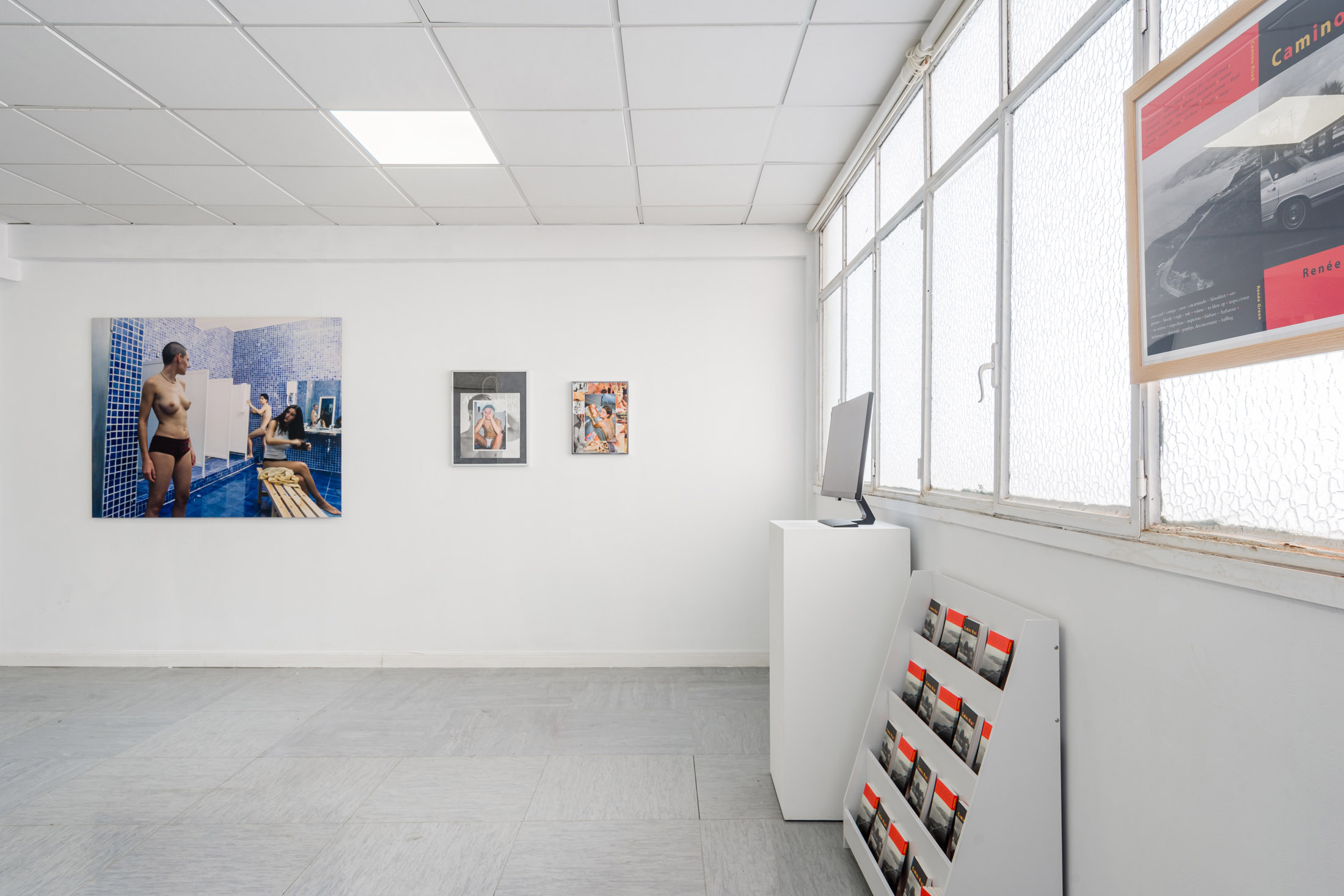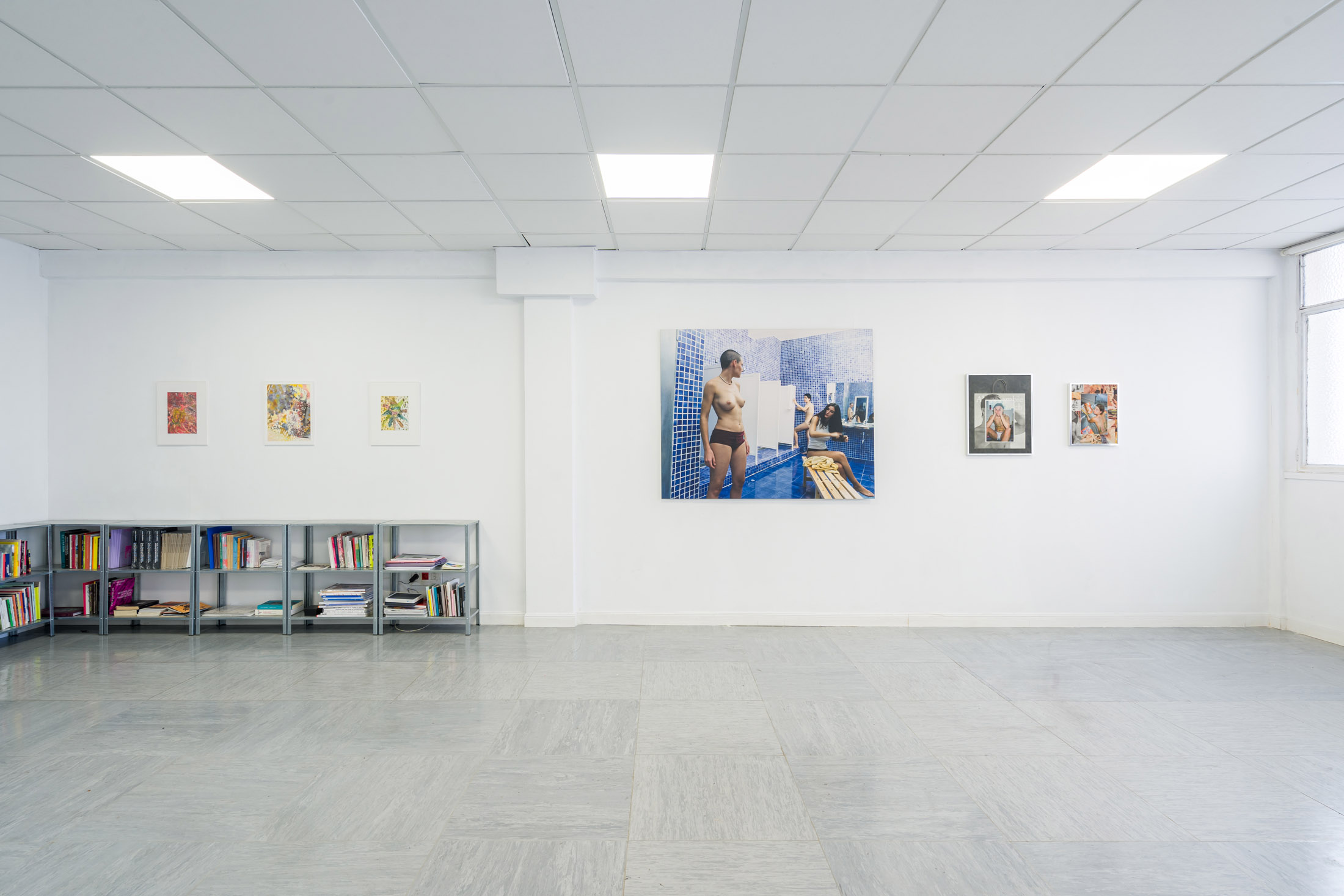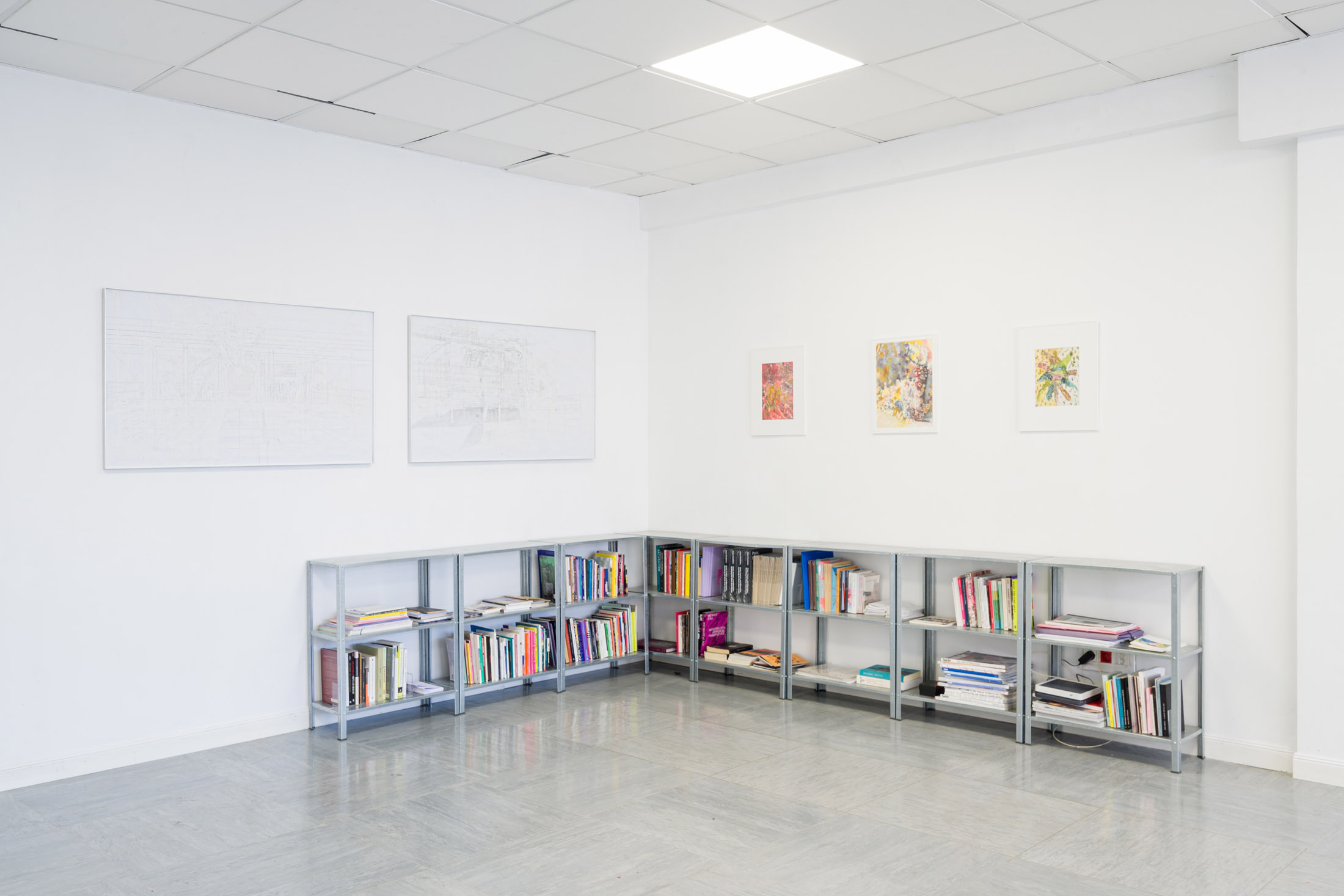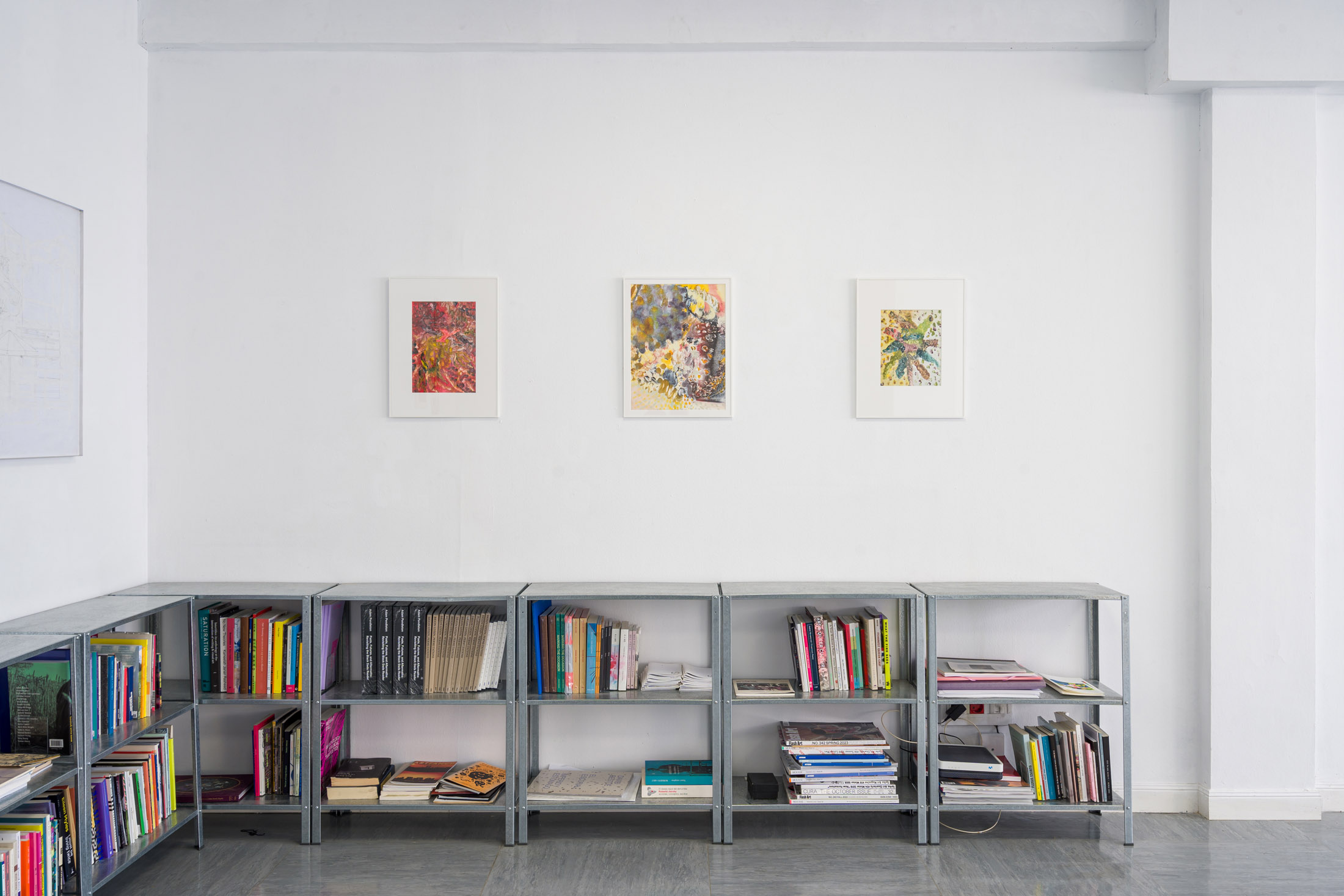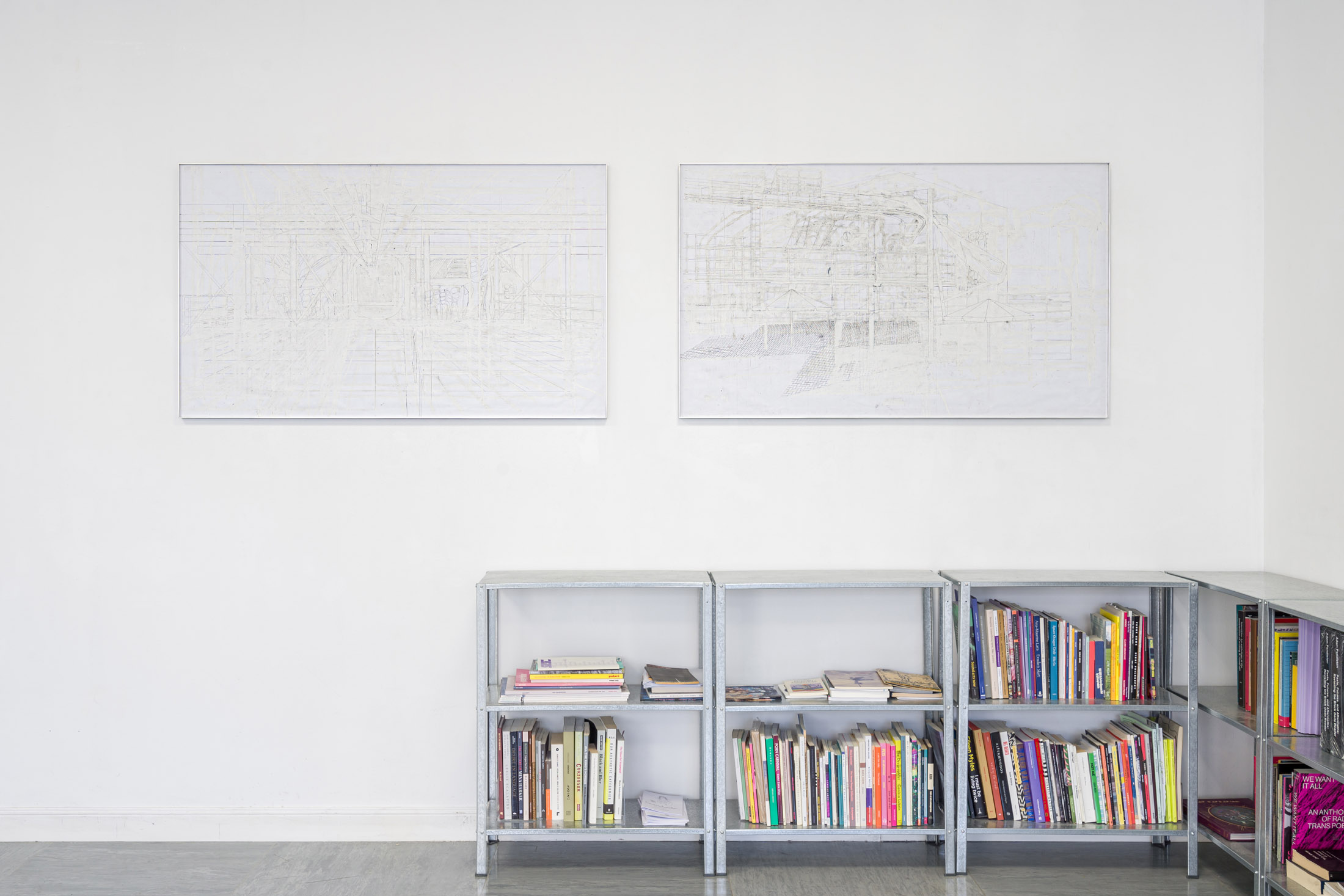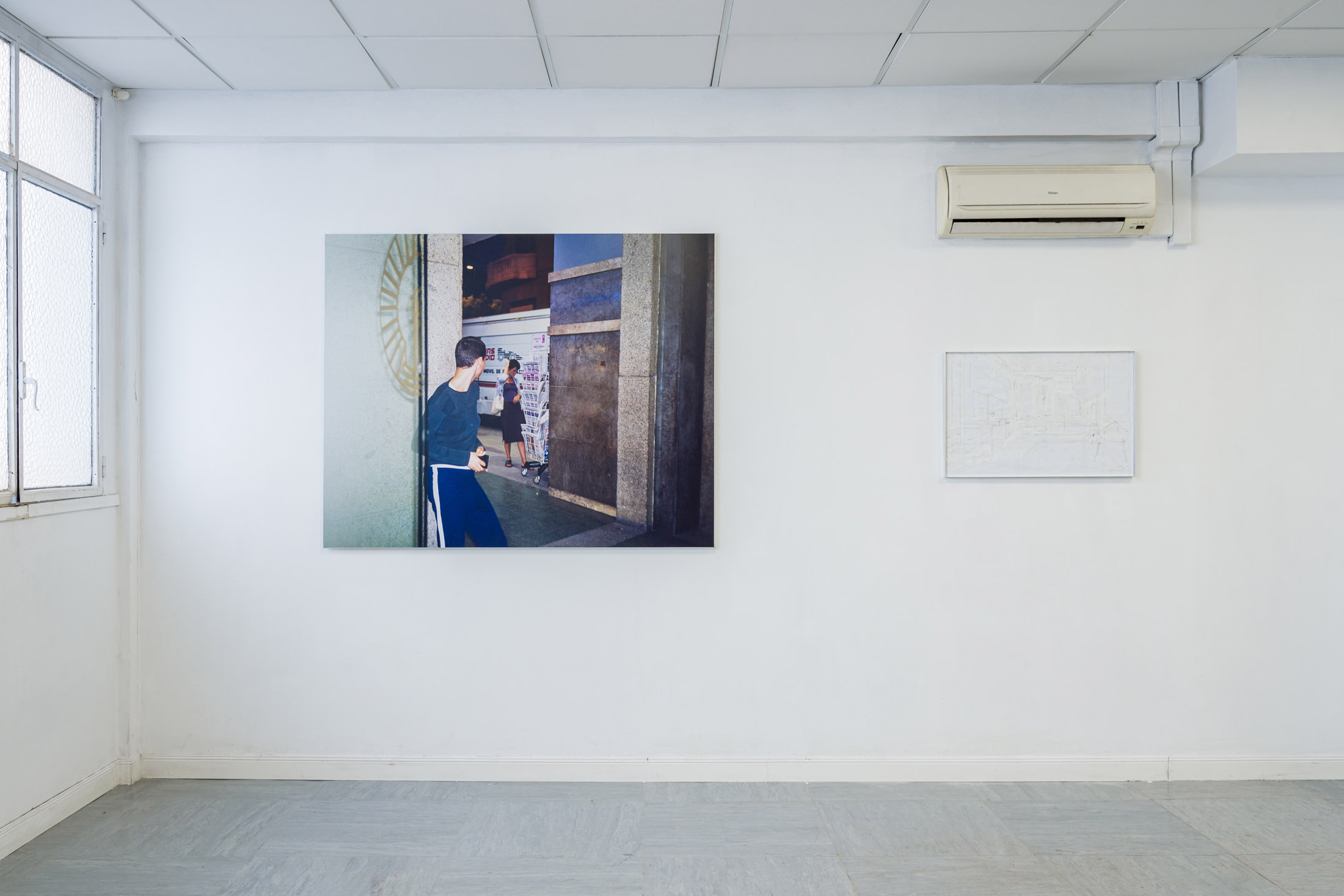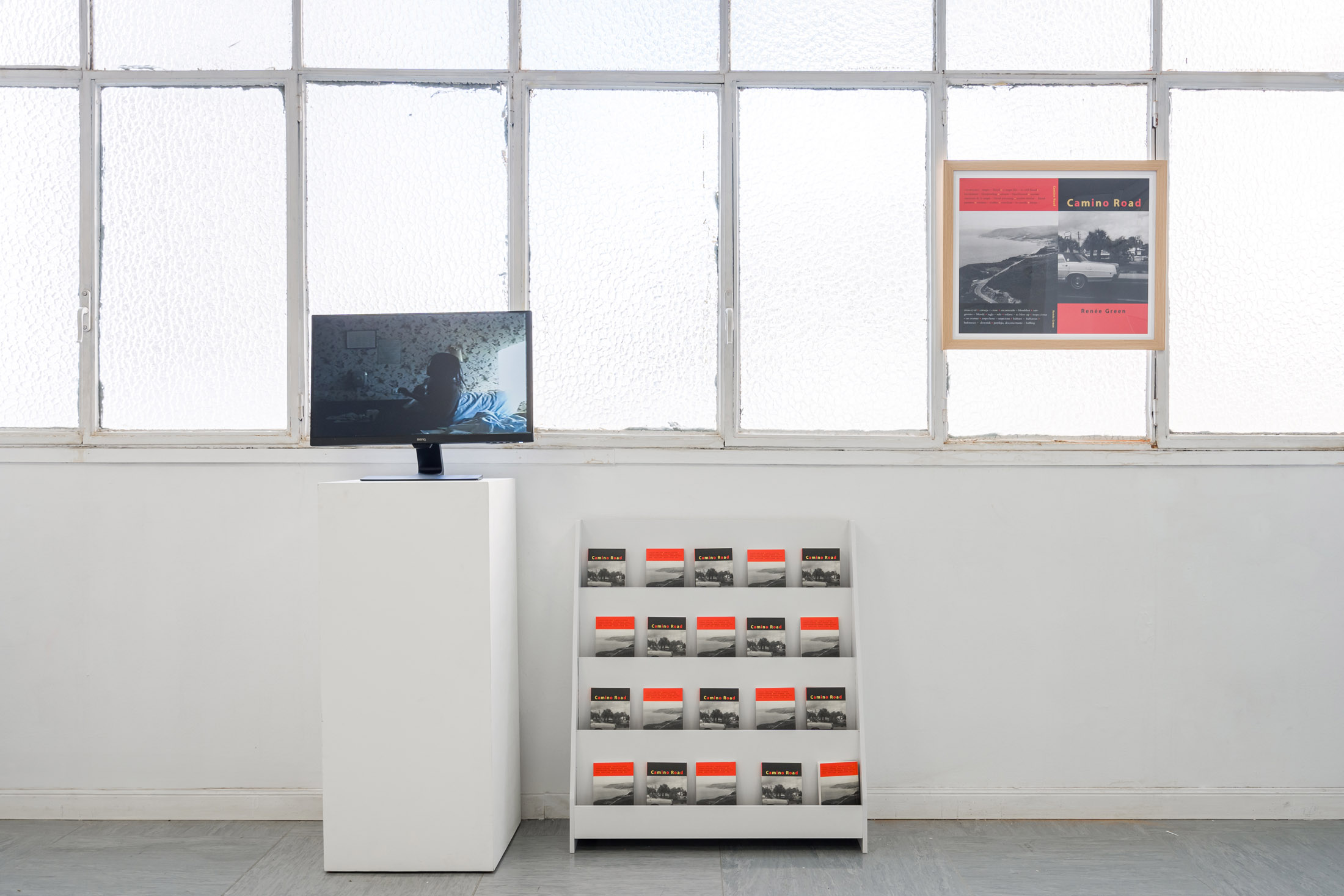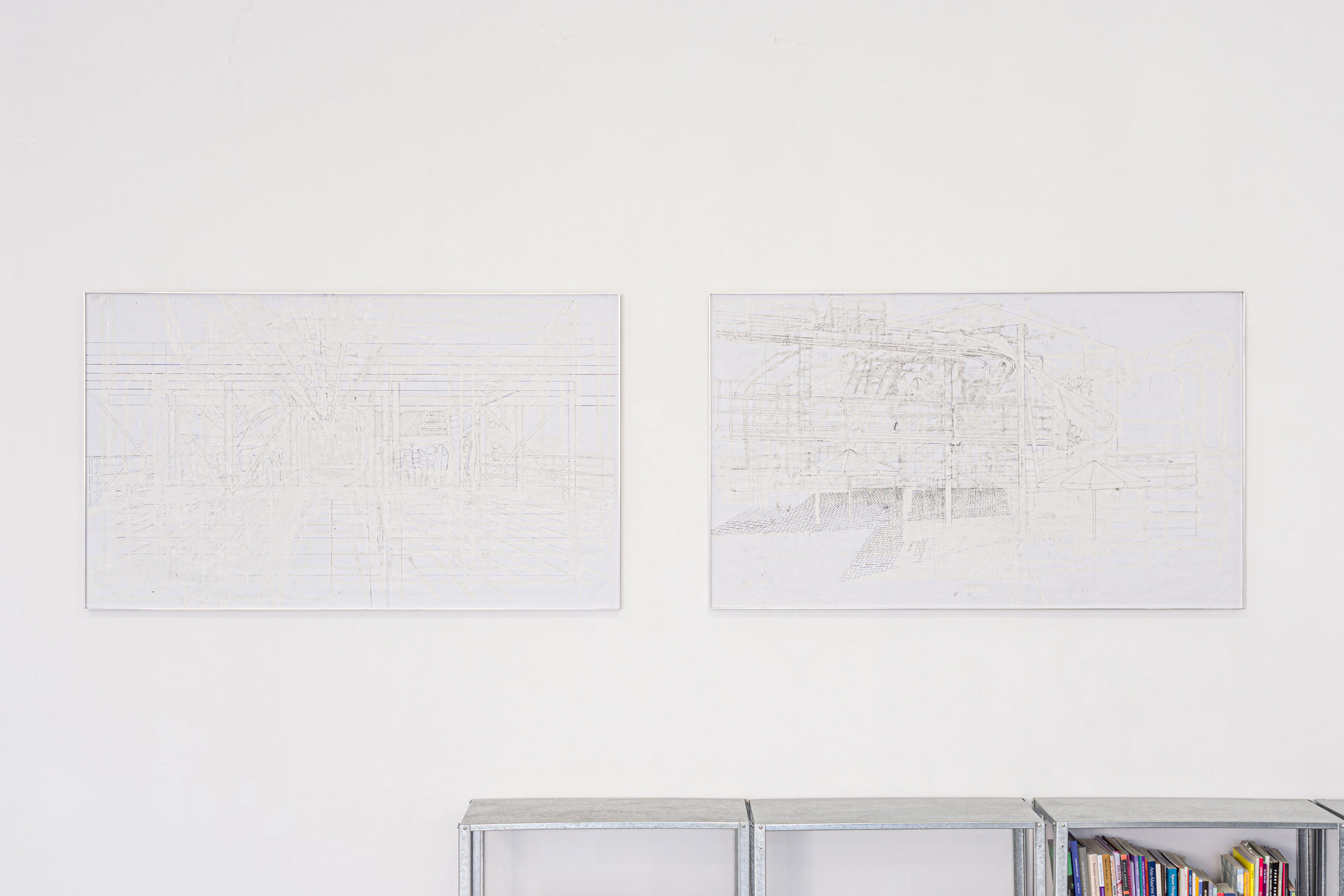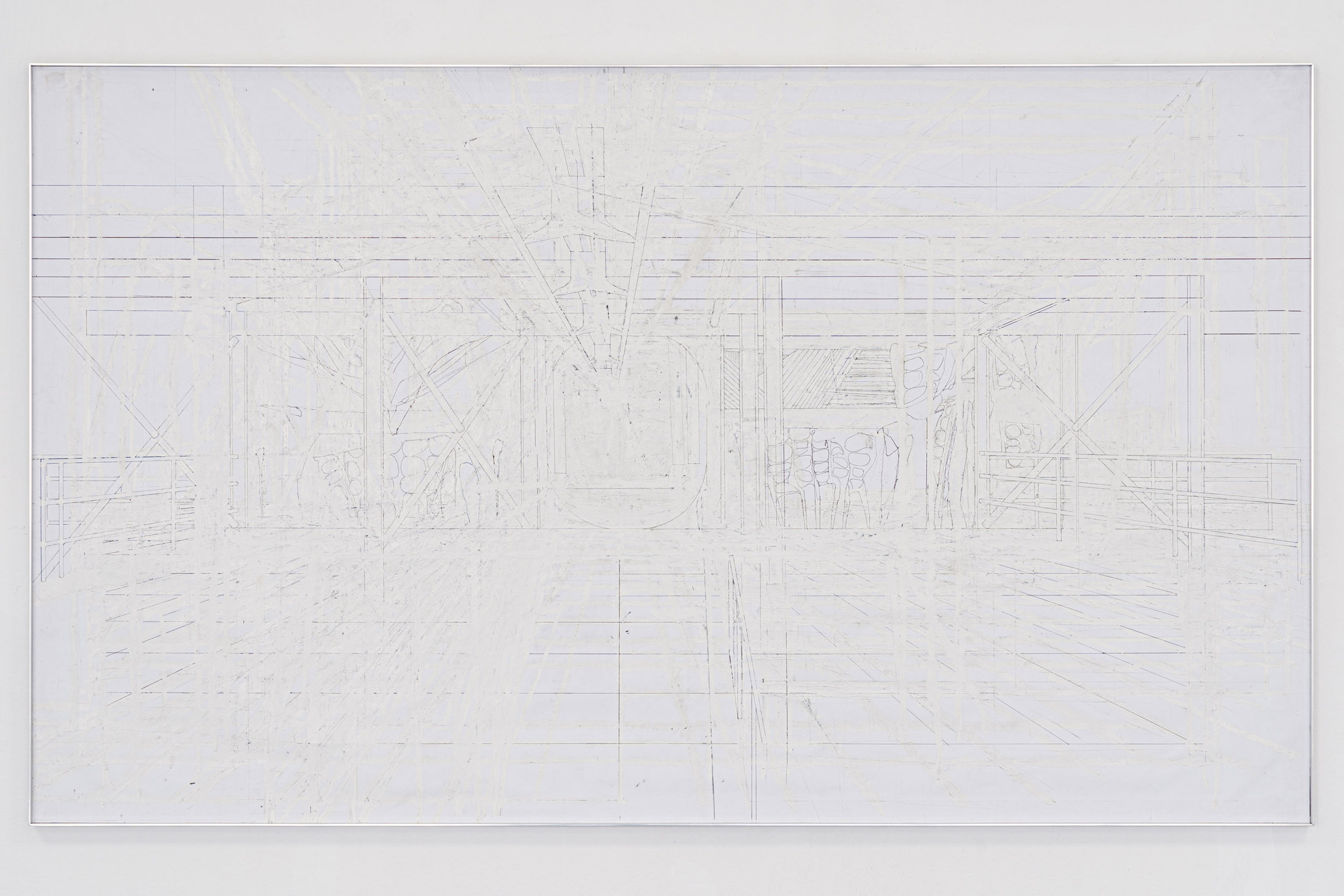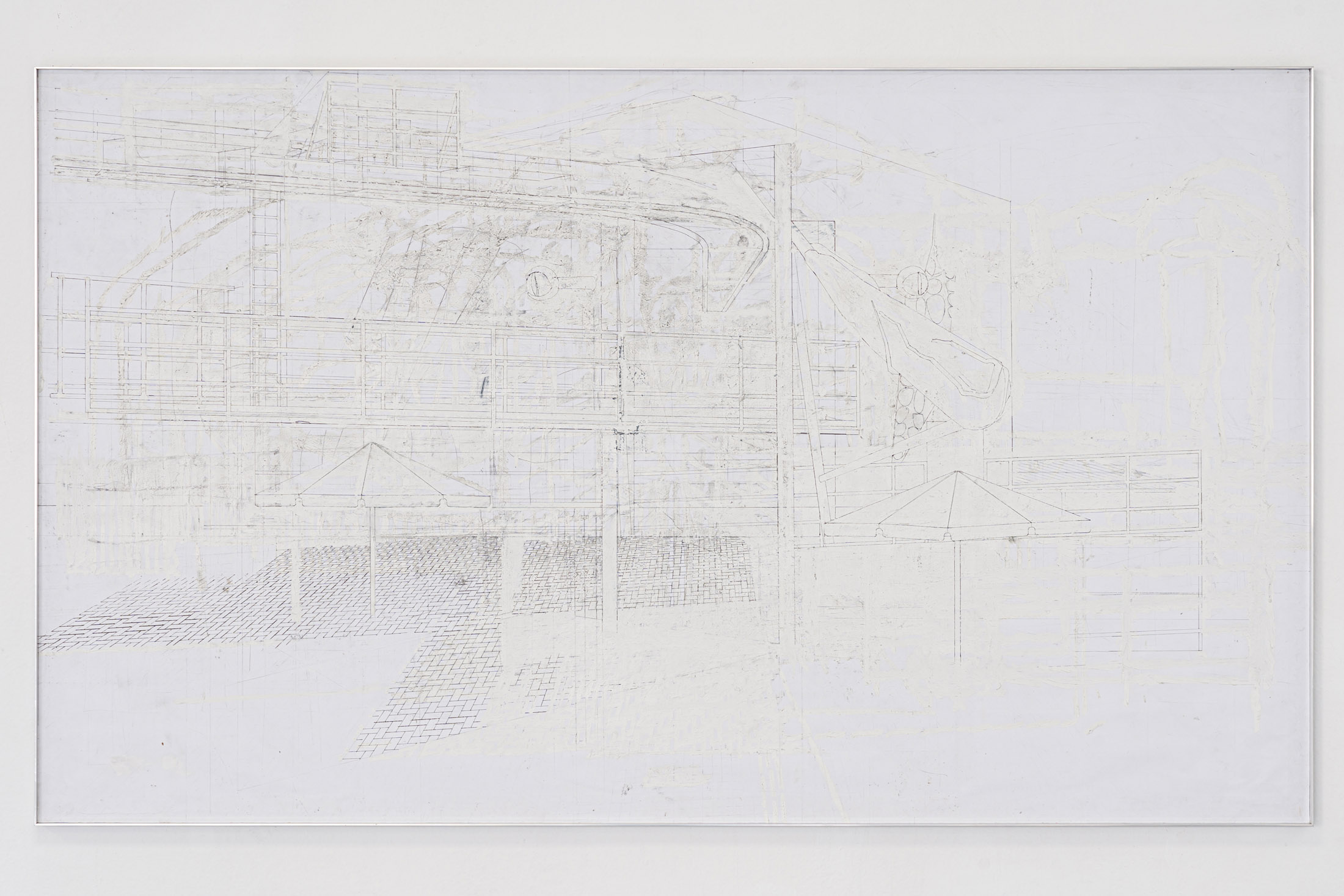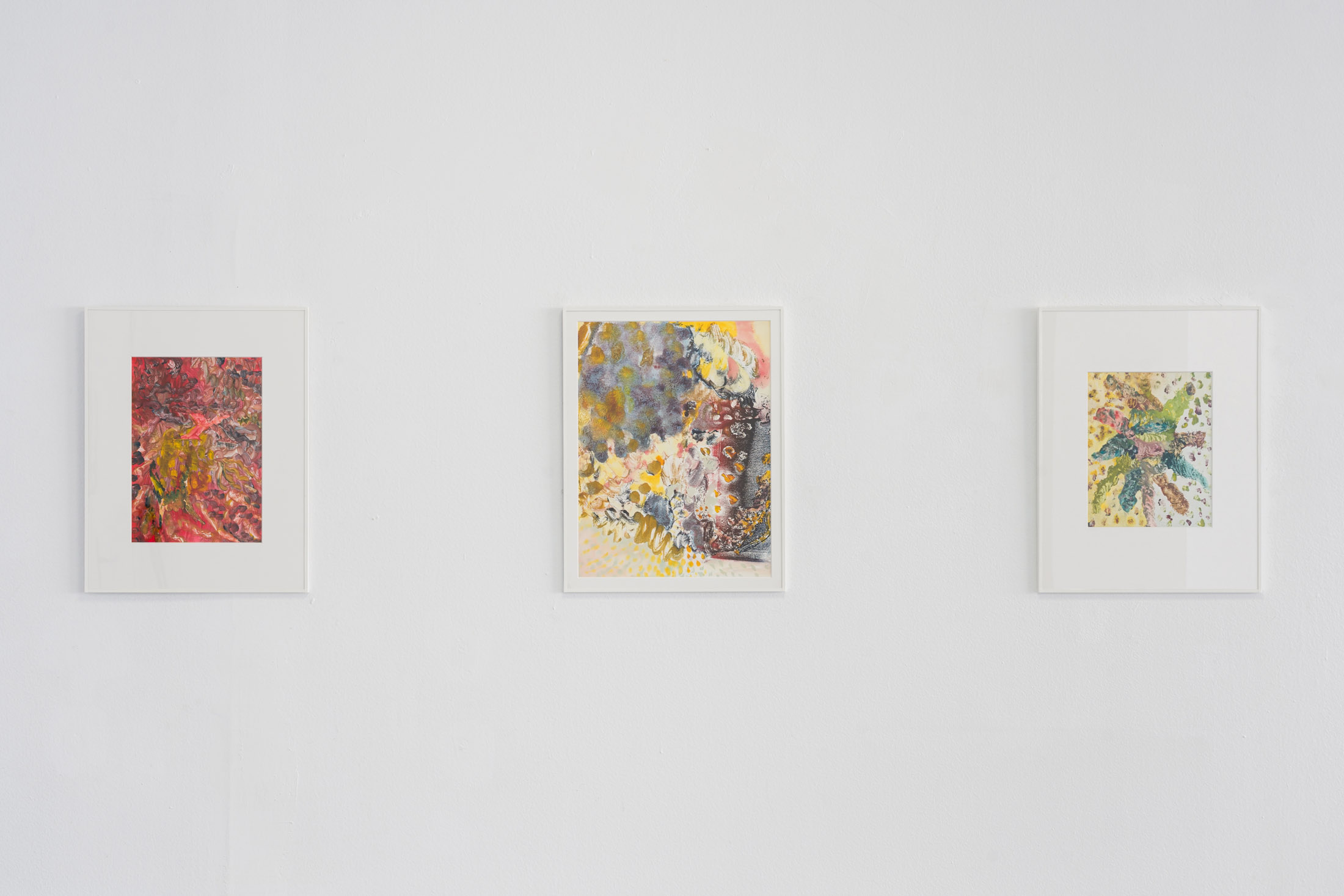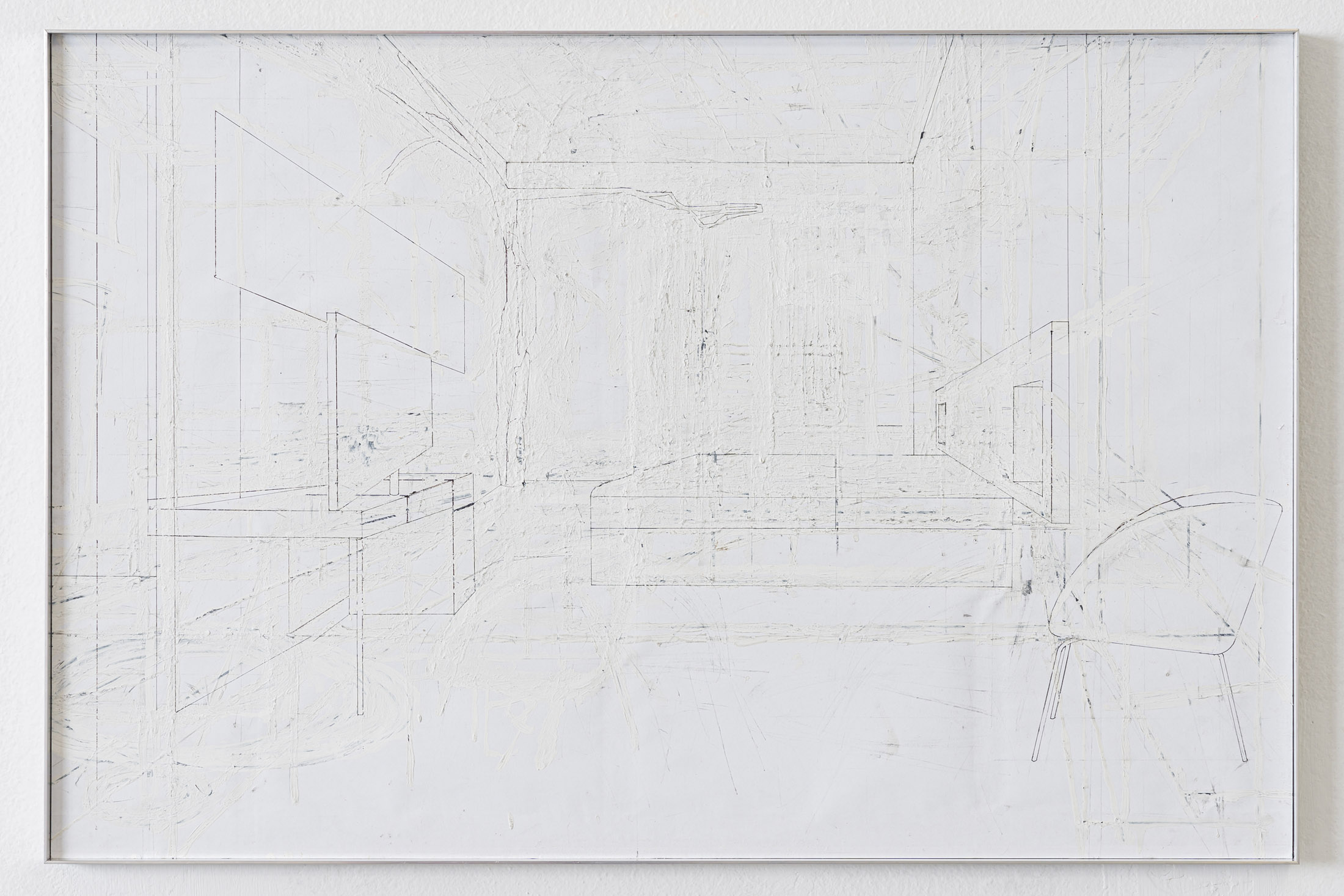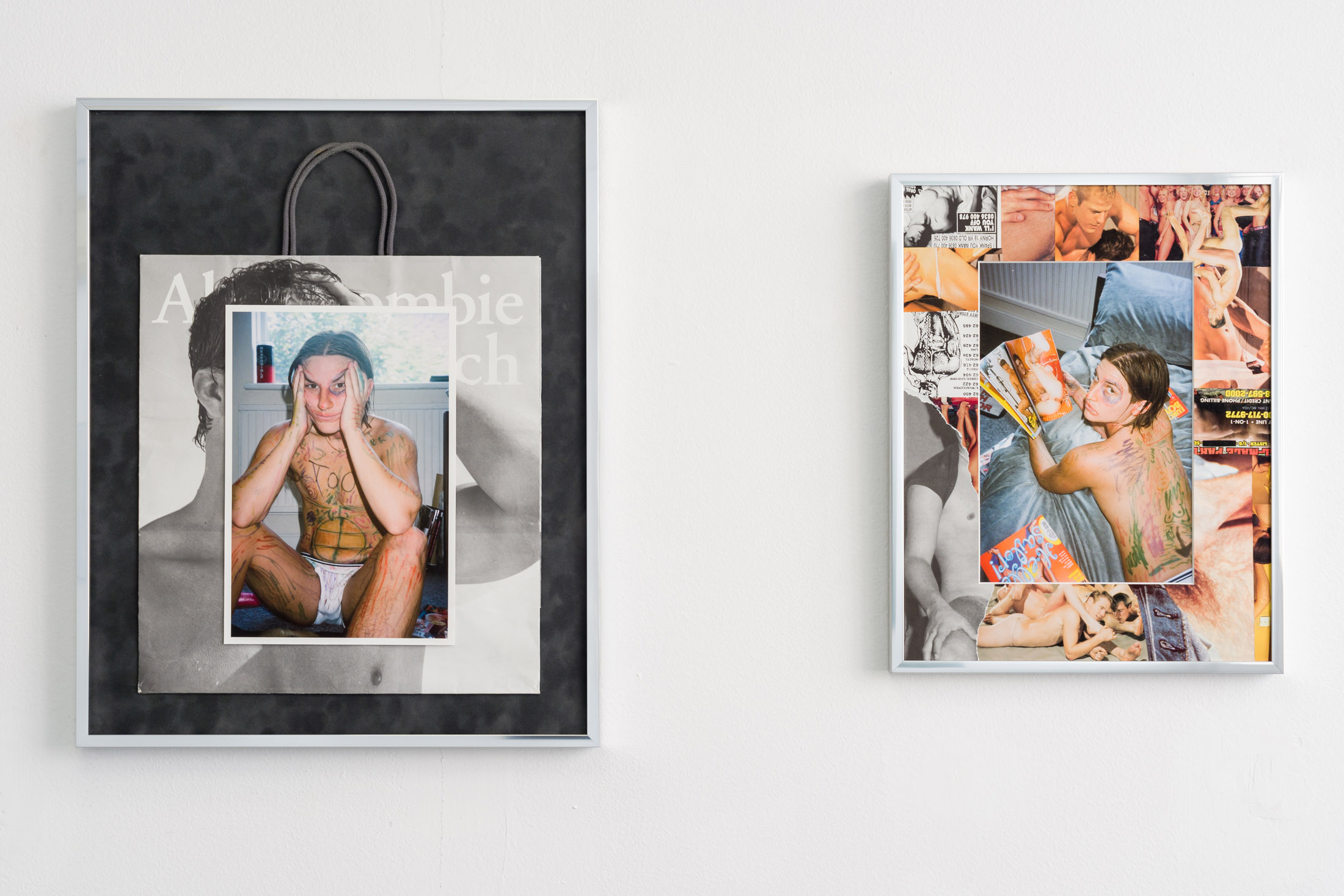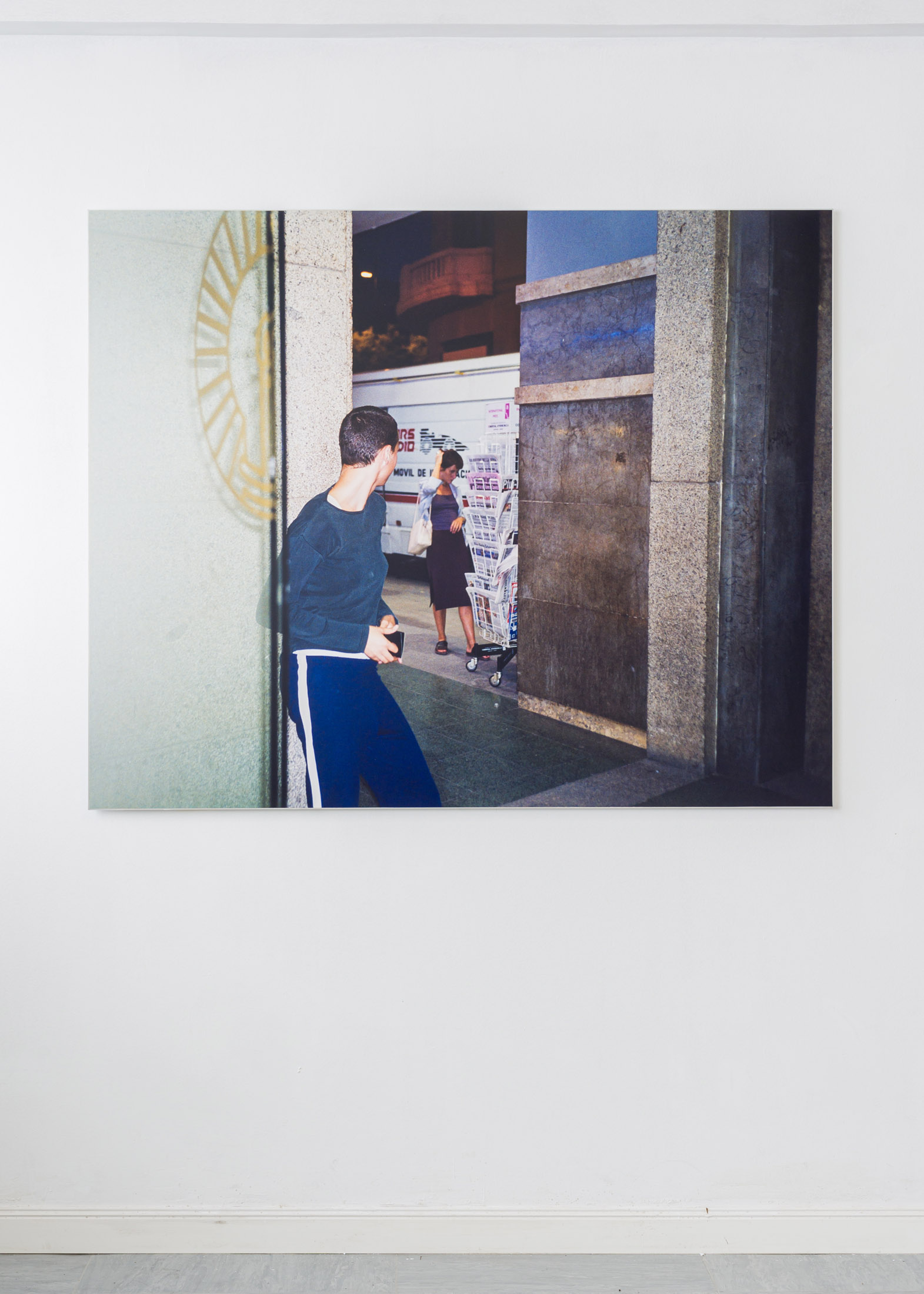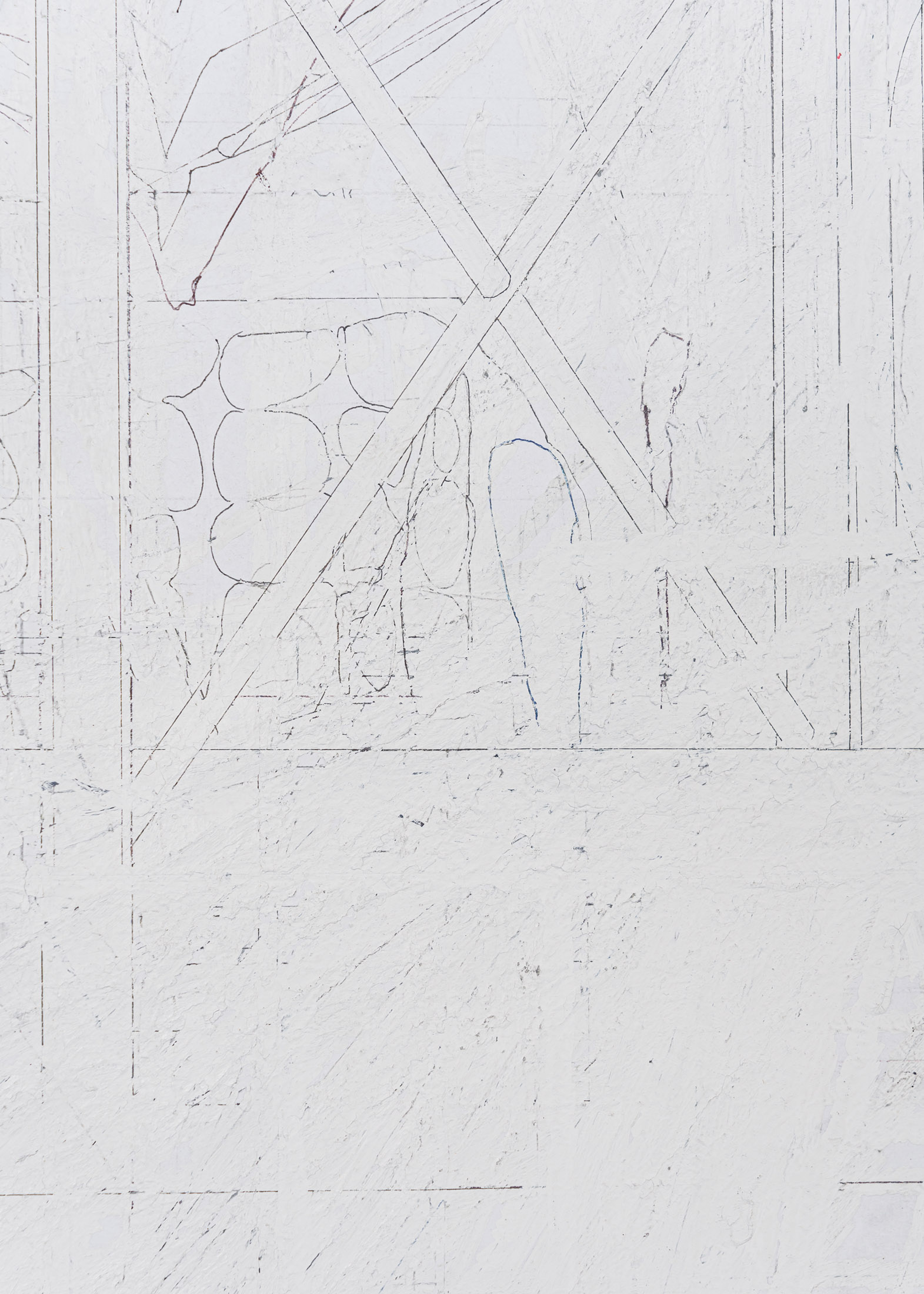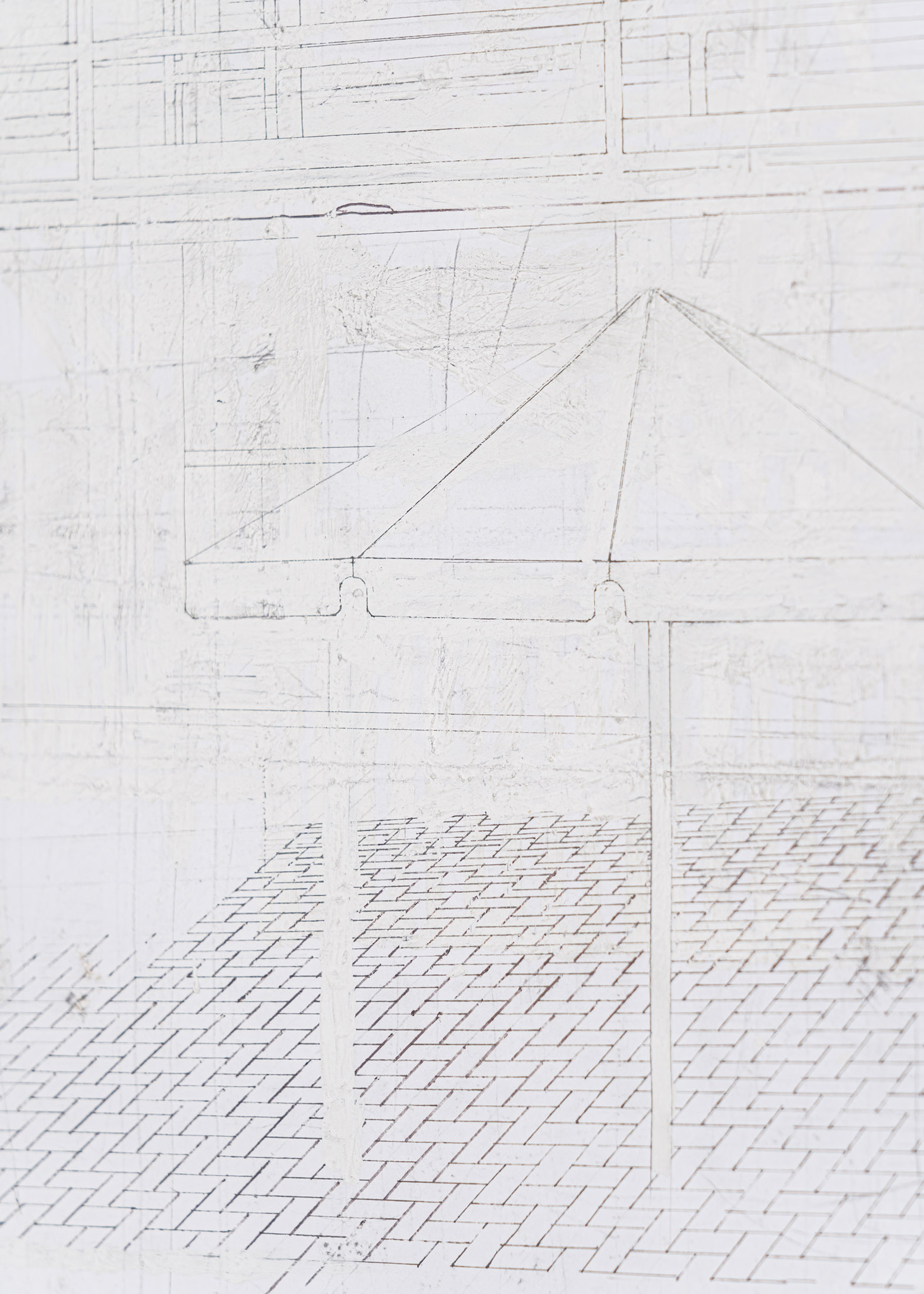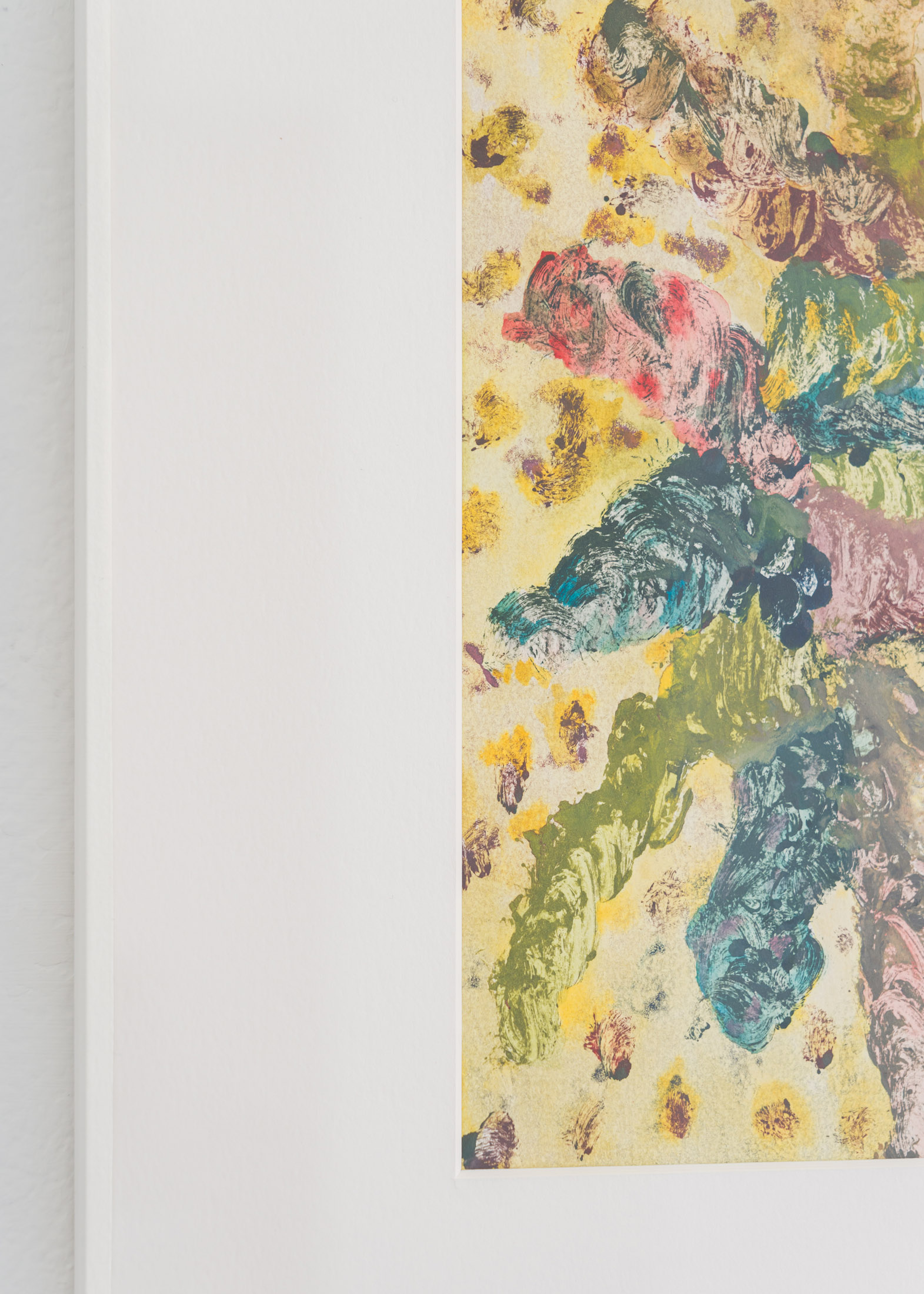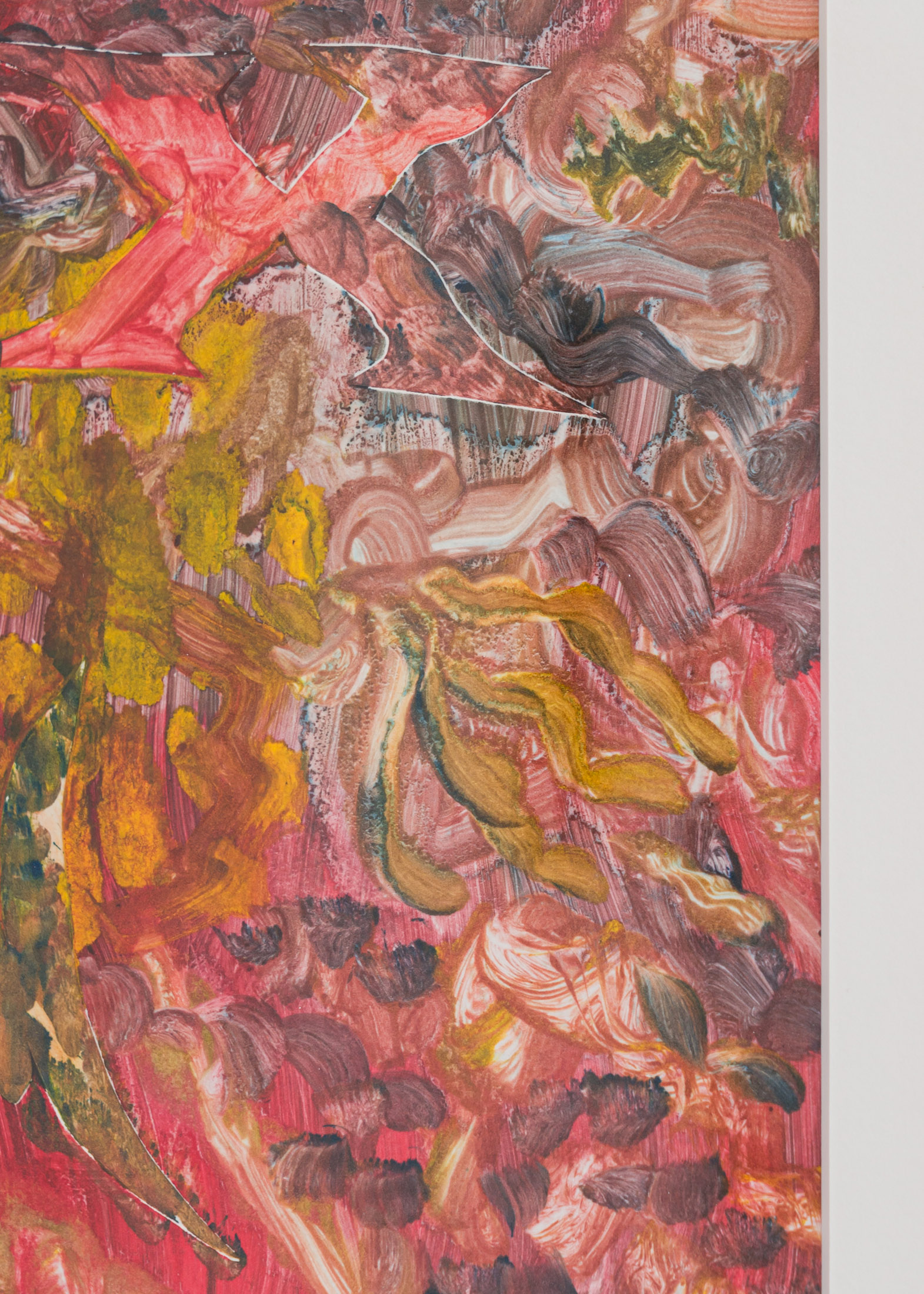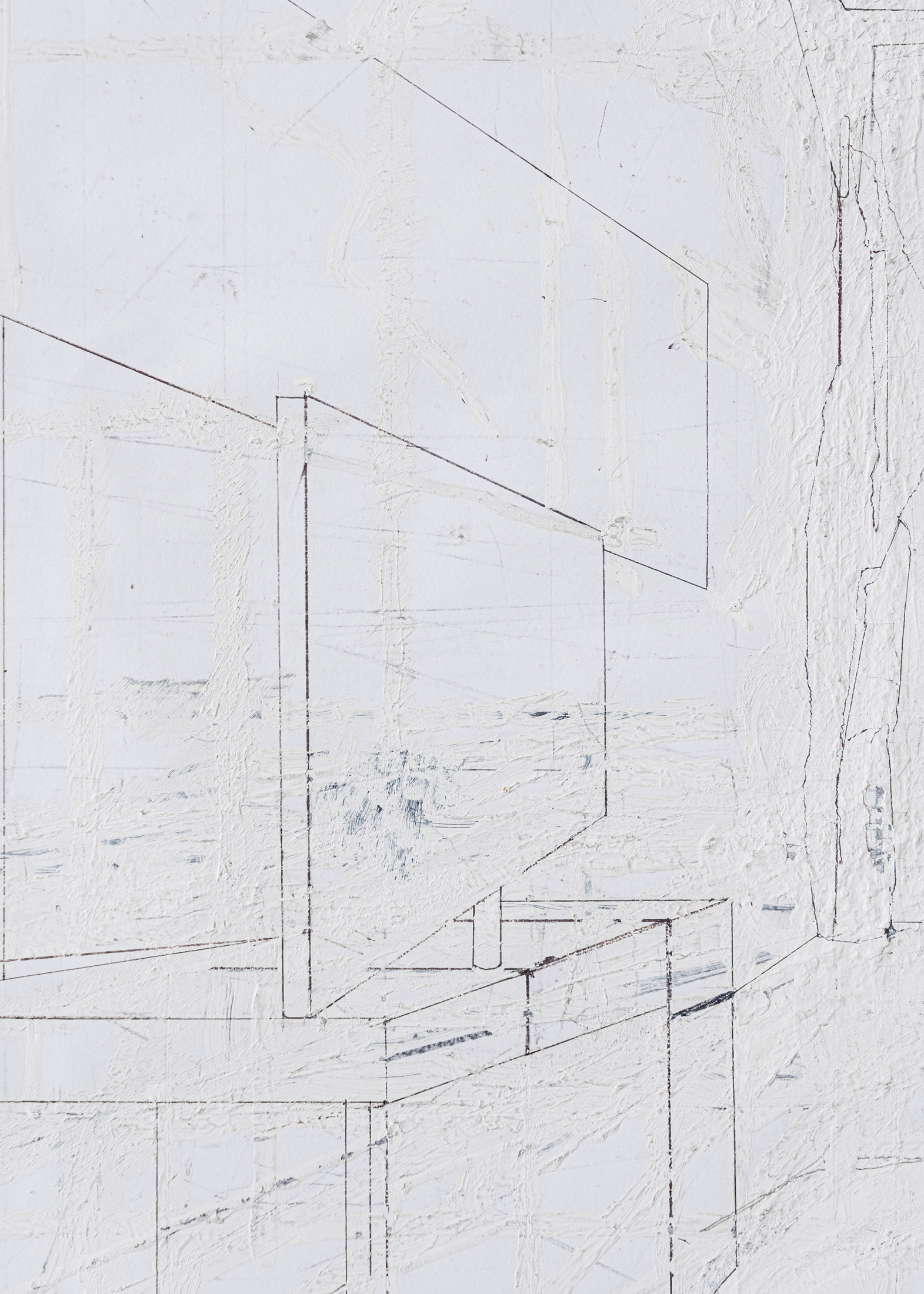Artists: Carmela García, Renée Green, James Sturkey, Gray Wielebinski
Exhibition title: Tried and True
Curated by: Bea Ortega Botas
Venue: Juf, Madrid, Spain
Date: November 18 – January 4, 2024
Photography: all images copyright and courtesy of the artists and Juf, Madrid
This exhibition has been over half a year in the making and upon its opening all ideas behind it can only be considered amidst the dense violence of fact omission, adverse framing of sources, neglect of the duty to inform and brazen silencing of the genocidal crimes that are taking place in Gaza. The works of Carmela García, Renée Green, James Sturkey and Gray Wielebinski, each in its own way, approach documentation and testimony in specific locations that demand forms of adjustment, shielding and frag-menting. To consider the role that settings, corporality and inadequacy play within the various forms of narrating and informing that structure our experiences and political environments is one of the main questions behind this exhibition. Today, this query beco-mes more incisive: which things do we accept getting wrong and which ones urgently require absolute accuracy; which vocabula-ries and languages we use to these ends; which sets of social coordinates —past and present— frame our historical moment and role; and what to make of our own frustration and complicity with the expectations placed on the informative and political syntax faced with events that will change everything forever.
All the works presented in Tried and True have a complex relationship with being given one particular meaning in one particular moment, most are part of ongoing artistic processes that last years, and they call for sustained attention and sufficient space to rise above any given curatorial discourse. My intention here is not to force yet another reading on these works, but to set up the inevitable re-signification that all of them take in the present moment. A few years ago, coinciding with the opening of an exhibi-tion at the New Museum in New York that looked back at art, pop culture and politics in 1993, Renée Green asked herself what was wanted of 1993 in 2013. I’m inspired by this question and ask myself what does our moment want from a selection of works decided months ago, and what can this precise time expect from art.
Carmela García’s photographs are two original copies from her 1998 series Chicas, Deseos, Ficción. They both engage with History painting, but they do so by subverting the genre’s primordial focus on a historical or mythological subject matter or narrati-ve —the genre was considered a way of conveying facts and generating History. The usual grandiloquent and far-reaching theme is substituted by urban scenes of coded complicity, intimacy and lesbian desire in the public sphere of Madrid in the 90s. These scenes occupy the broad dimensions of History painting and play with the recognisable traits of its tradition, that is, theatricality, stillness and classical compositions, to open up this model of representation to other interactions and stories. García’s images are thus close to the document but traversed by the theatrical. Between the testimony of a community and a social position, and the scenographic capacity to understand embodied actions as not exclusive of a moment or a person.
Renée Green’s Camino Road installation, —including a video, a novel and a print out of the cover and back of the book—was first shown at Museo Nacional Centro de Arte Reina Sofía (Madrid) in 1994, as part of the exhibition Cocido y Crudo curated by Dan Cameron. Critics have previously noted how Green’s practice avoids an excessive use of overarching terms such as colonia-lism, imperialism, racism or heterosexism; instead she proposes an ambiguous documenting of objects, processes and zones of encounter, which she designates as contact zones, between different cultural and political contexts. This documentation surpas-ses the mere informational aspect and opens up to the site- specificity and affect situated between bodies, texts and languages. Camino Road is a bilingual novel, written in Spanish and English, set around 1980 with Lyn, a young art student, as its protago-nist, and a trip to Mexico as the epitome of her aspirations to bohemia, being “on the road” and artistic rebellion. Green combi-nes languages, genres, quotations and various settings to generate a sense of transit without a fixed position, acknowledging the insufficiency of one narrative structure or closure to grasp this experience. In a similar way, the video was filmed in Madrid, Sevilla, Cleveland and Brooklyn, and subcultures connected to art and music are tracked in different locations. The vernacular and autochthonous —toreros, Lhardy and La Violeta— appears in parallel to textual references to detachment and displacement in posters and flyers that announce discounts on international calls in Williamsburg or drug problems in Tirso de Molina square. In one scene, Green herself discusses with cultural critic Diedrich Diederichsen the representation of bohemia, from Valle Inclán to La Movida, and the movements towards and from Spain in different phases of exile and colonialism. In another, small plastic military figures —Franco, Hitler, Eisenhower, Rommel…— link violence and suppression to waves of dispossession.
James Sturkey’s drawings stand in between architectural renderings and sketches of theatrical sets. Two of them show the departure and return areas of a coaster station in an amusement park. The third drawing portrays a hotel room. Transit, shielding and situating oneself even if only for a short time are continued interests in Sturkey’s practice. His work has a syntactic quality, accentuated by the blueprint scenarios and the homogenizing use of Tipp-Ex. This quality, in combination with the detailed archi-tectural elements and the fantasy component, speaks to a social experience with different intensities and phases of belonging, complicating the literality of its documentation and memory.
Gray Wielebinski appears photographed (a collaboration with photographer Roxy Lee) in his collages. His body marked with pen puts the spotlight on processes of categorisation and reading, asking questions about their visual, performative and social construction. The collages show the complexity of self-narrating and representation with the accumulation of the vernacular language and iconography of “hazing“ culture—popular in university fraternities, sports teams and schools, usually a humiliating and abusive initiation rite—and different identitarian tropes and roles —a hiper-american Abercrombie & Fitch shopping bag, power and violence, masculinity and homoeroticism. The series of monoprints take the barbed wire as a departing point: a symbol of privatization and control and a real mechanism of colonization strongly connected to American history and its landscape. The barbed wire becomes diffuse in the prints and, in parallel to the abstraction of this recognisable element, questions arise about its real effects, operational omnipresence and the everywhereness of surveillance, domination and appropriation for those that have been displaced.
Carmela García (b. 1964 in Lanzarote, lives in Madrid). The central element of her works is the double need to rethink and change the world. To do so from a gendered perspective is not only a simple way of projecting the need for another future, but also, in the first instance, a scenario of vindication of a different con-sideration of the feminine in the world. Her work unfolds as an exercise that develops both from the history of social relations between women and as an ongoing fiction that offers us oblique visions of personal contact, affinities and love between them. Her work has been shown in museums in Spain (Reina Sofía, CAAM, MUSAC, IVAM, etc.), USA (PS1 MoMA), Japan (MOT, Kanazawa Museum), Paris, Amsterdam, Copenhagen, etc. She has been represented by Juana de Aizpuru gallery in Madrid from 1998 to 2015. She has participated in international fairs such as Art Basel, Arco Madrid, Paris Photo, Frieze, etc.
Renée Green (b. 1959 in Cleveland, OH, lives in Somerville, MA, and New York, NY) is an artist, writer, and filmmaker known for her highly layered and formally complex multimedia installations in which ideas, perception, and experience are examined from myriad perspectives. Via films, essays and writings, installations, digital media, architecture, sound-related works, film series and events her work engages with investigations into circuits of relation and exchange over time, the gaps and shifts in what survives in public and private memories as well as what has been imagined and invented. Green’s exhibitions, videos and films have been seen throughout the world in museums and art institutions. In the last decade, her work has been featured in solo or group exhibitions at the Ezra and Cecile Zilkha Gallery, Center for the Arts, Wesleyan University, Connecticut; moCa Cleveland; Migros Museum für Gegenwartskunst, Zurich; KW Institute for Contem-porary Art and daadgalerie, Berlin; Carpenter Center for Visual Arts at Harvard University, Cambridge, Mass.; MAK Center for Art + Architecture at the Schindler House, West Hollywood; and the Museum of Modern Art, the Whitney Museum of American Art and the New Museum, all in New York.
James Sturkey (b. Crawley, UK) combines drawing, painting and sculpture to describe the liminal architecture of everyday life. His drawings survey the empty interiors of public toilets, saunas, hotel rooms and other such spaces. These subjects, which for Sturkey are passions, are as banal as much as they are built upon the idea of phantasmatic potential. His painting and sculptural works bring them to life like elements of theatrical staging, whereby the viewer finds themsel-ves both comfortably familiar and yet alienated as the sustaining artifices of everyday life are made explicit. Sturkey studied at Goldsmiths College, London, and Städelschule, Frankfurt, under Peter Fischli and Hassan Khan. Recent exhibitions include My Very Own Nemesis at Husslehof, Frankfurt, and Half Bianca at City Galerie Wien, Vienna.
Gray Wielebinski (b. 1991 Dallas, TX, USA) received a BA from Pomona College, Claremont CA, USA in 2014 before completing an MFA from the Slade School of Fine Art, London, UK in 2018. Recent exhibitions include: group shows at Goldsmiths Centre for Contemporary Art, London, UK; Francois Ghebaly, Los Ange-les, CA; Bold Tendencies, London, UK; and V.O Curations, London, UK. Recent solo exhibitions include: Love and Theft, 12.26 Gallery in Los Angeles, CA; Oil and Water, Hales Gallery in London; and Two Snakes, 12.26 Gallery in Dallas, Texas (2020). Recent residencies include V.O Curations, City and Guilds in London in 2021 and 2019 respectively and at the Academy of Visual Arts in Hong Kong in 2018. His first book 100 Baseball Cards was published with Baron Books in 2022. Wielebinski’s work is in the collections of Los Angeles County Museum of Art, CA, USA and San Francisco Museum of Modern Art Library & Archives, CA, USA.

